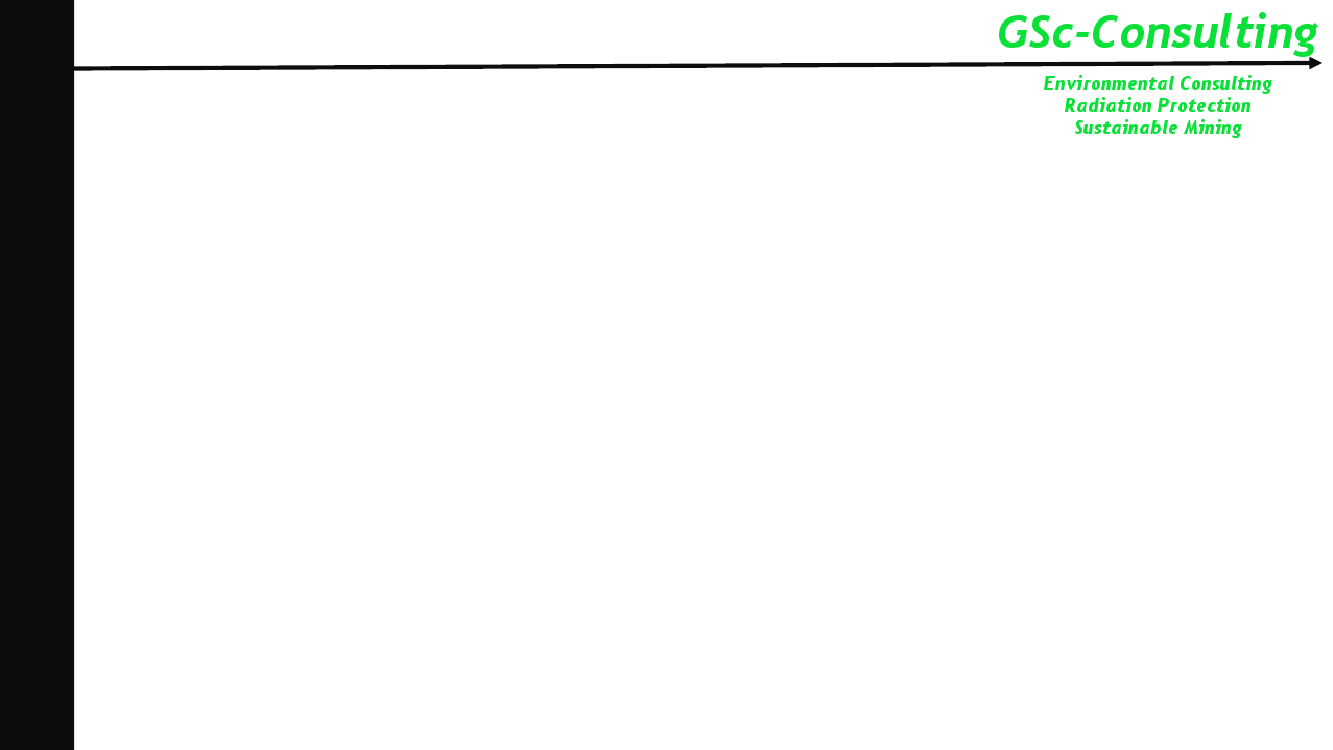
GSc Consulting
Environmental and health
impacts of uranium mining in
Greenland
Overview on impacts, their evaluation and resulting consequences for
regulation and control
Public Conference on mining uranium in Greenland,
Copenhagen/Denmark, March 16 2016